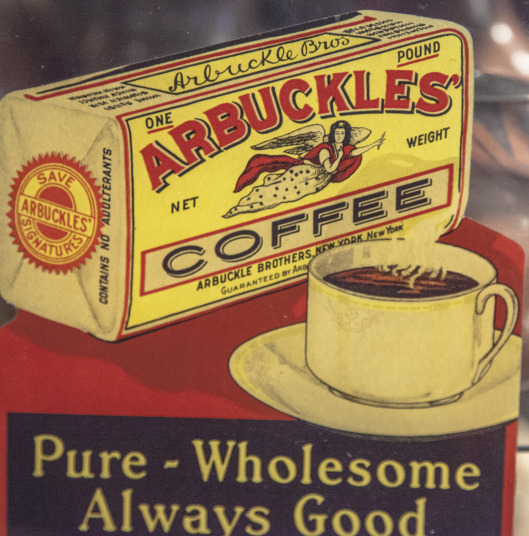|

Aug 26, 2013

Coffee and Water
By Barbara Schock
During his boyhood, Carl
Sandburg was given many household tasks to
perform. One which he shared with his brother
Martin was grinding coffee. One or the other would
hold the mill, filled with Arbuckle’s coffee
beans, between his knees. The handle would be
turned until all the beans had been ground down.
For several days,
the fresh coffee would be added to that which was
already in the pot. After three or four days, the
accumulated grounds would be thrown out and the
process would begin again. For one day, the coffee
was wholly fresh and at its best.
Water was needed
to make the coffee. Another of Sandburg’s
responsibilities was bringing in pails of water
from the back yard pump. In all seasons he worked
the pump’s handle until he had filled a bucket or
two for drinking and cooking. In the hottest
months of the year, the butter supply would be
wrapped securely and lowered into the well. There
it stayed cold and firm.
Occasionally, the
pump would cease to function. Carl’s father would
lower him down into the well to replace the
malfunctioning part. Many houses in Galesburg had
wells to supply the vital fluid. Homeowners had to
maintain their own wells and hope they didn’t fail
during a dry spell of weather.
The Sandburg house
also had a cistern where rainwater was collected
from the roof. That water was used mostly for
doing laundry and for bathing. During the summer
months, the cistern water was used to prime the
pump of the well. At those times, water might also
be drawn from the cistern for drinking. Generally,
it was used as a last resort, largely because its
flavor was not good. No real thought was given to
the question of how healthful it might be.
Rainwater washed
off the roof of a house might contain the remains
of bird droppings, mold from decaying leaves and
particles falling from the sky. A cistern had to
be covered in order to prevent the incubation of
mosquito larvae in the standing water.
In
the days before water treatment plants operated by
municipalities, there were many opportunities for
water to be contaminated. Individuals had to be
very careful in choosing the source of water from
which to drink.
 |
|
Date |
Title |
|
August 26, 2013 |
Coffee and Water |
|
August 19, 2013 |
A Horse! A Horse! |
|
August 12, 2013 |
Gaddial Scott |
|
August 5, 2013 |
The Racetrack |
|
July 29, 2013 |
John Peter Algeld - Part II |
|
July 22, 2013 |
John Peter Altgeld - Part I |
|
July 15, 2013 |
Tramps, Tramps, Tramps |
|
July 8, 2013 |
Lady Liberty |
|
July 1, 2013 |
Galesburg's Fourth |
|
June 24, 2013 |
John H. Finley |
|
June 17, 2013 |
The World's Columbian Exhibition |
|
June 10, 2013 |
Fruit Short-Cake |
|
June 3, 2013 |
Horatio Alger, Author |
|
May 27, 2013 |
Memorial Day, 1887 |
|
May 20, 2013 |
Professor Jon W. Grubb |
|
May 13, 2013 |
Beginnings of Lombard University |
|
May 6, 2013 |
Young Sandburg’s View of
Lombard College |
|
April 29, 2013 |
Thinking |
|
April 22, 2013 |
Robert Colville, Master Mechanic |
|
April 15, 2013 |
The Galesburg Opera House |
|
April 8, 2013 |
Grocery Stores and Sample Rooms |
|
April 1, 2013 |
A Hearty Breakfast |
|
March 25, 2013 |
The Lost Wallpaper Legend |
|
March 18, 2013 |
Martin G. Sandburg |
|
March 4, 2013 |
The Edison Talking Machine |
|
February 25, 2013 |
Joe Elser, Civil War Veteran |
|
February 18, 2013 |
Remember the Maine... |
|
February 11, 2013 |
Lincoln's Birthday |
|
February 4, 2013 |
Curiosity |
|
